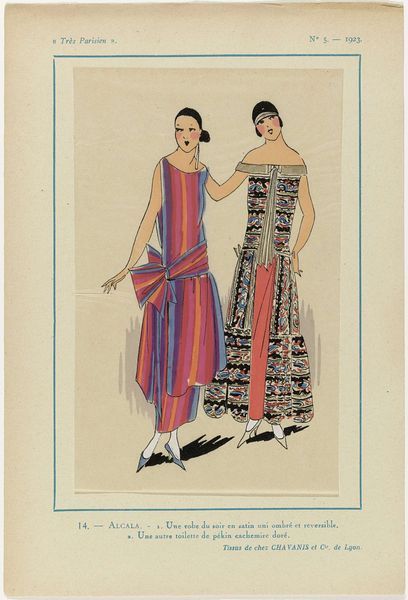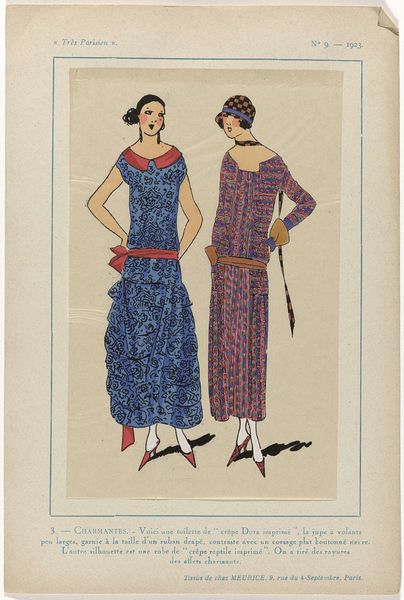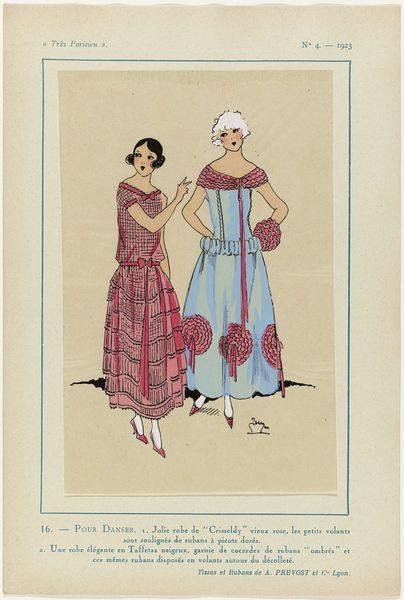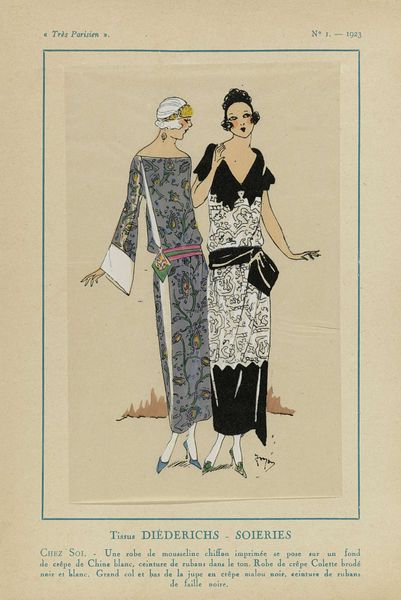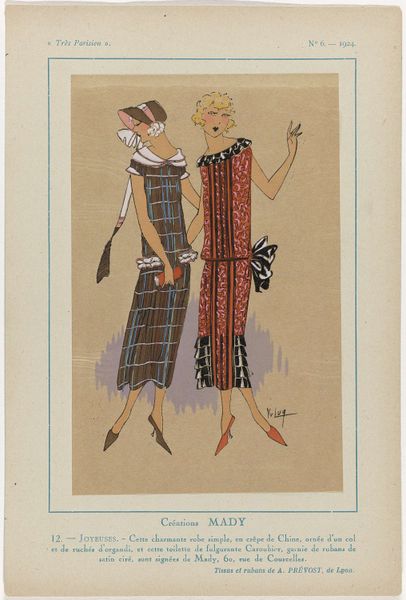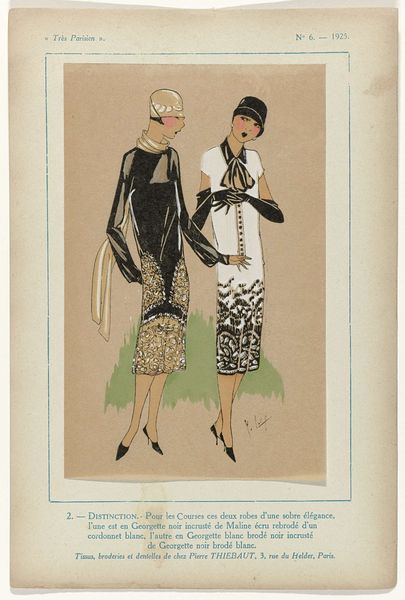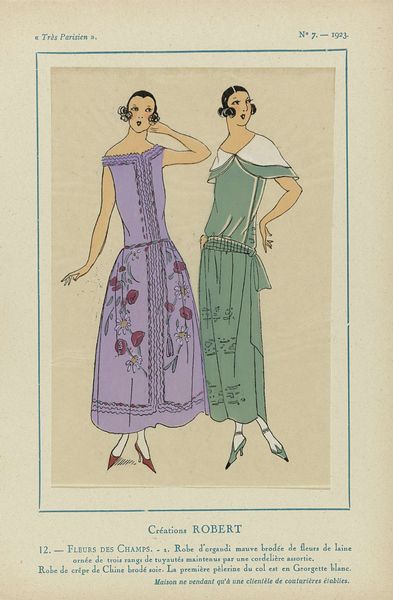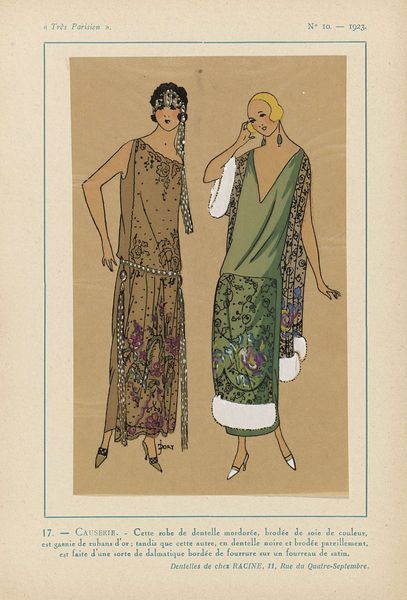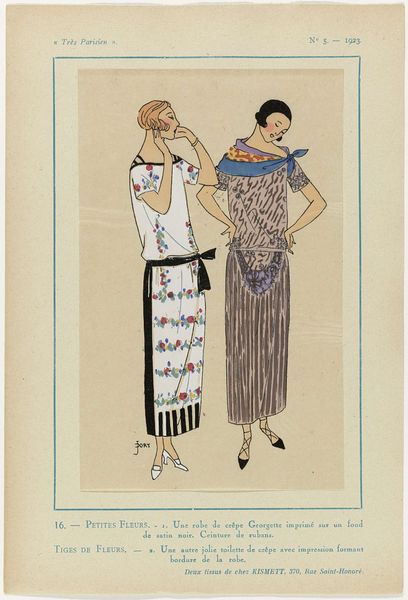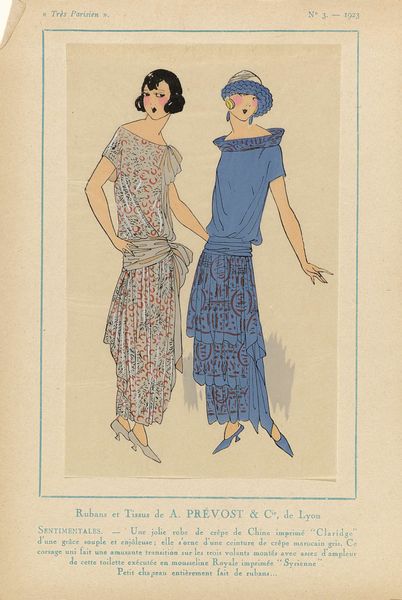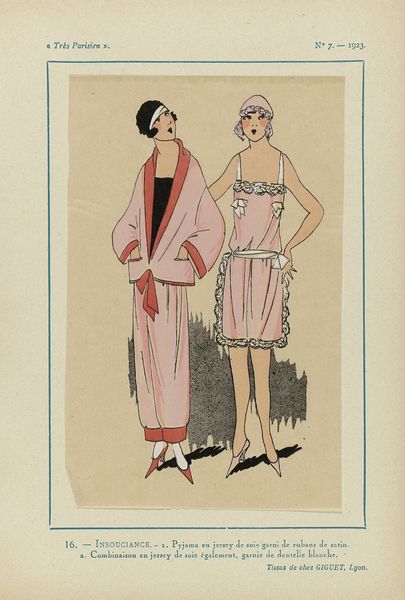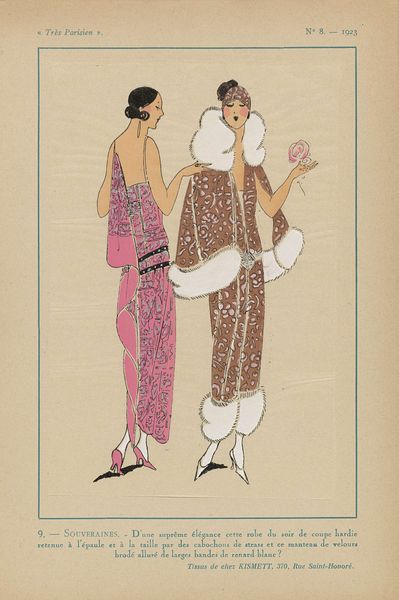
Très Parisien, 1923, No 5: 15.- ARMENONVILLE. - 1. Une robe du soir... 1923
0:00
0:00
Dimensions: height 269 mm, width 180 mm
Copyright: Rijks Museum: Open Domain
Curator: I adore this piece; it's like a little portal back to a shimmering Parisian night. This watercolour illustration, titled “Trés Parisien, 1923, No 5: 15. - ARMENONVILLE. - 1. Une robe du soir…” whispers tales of the jazz age, wouldn't you agree? Editor: Immediately, it feels delicate, almost fragile. The colour palette, those soft pastels, it evokes a mood of such restrained elegance. But beyond the elegance, what's it *doing*, historically? Curator: It’s part of a broader commercial context, taken from an illustration, likely for a fashion magazine. We see it at the Rijksmuseum and it reveals much about the rising fashion industry during the interwar period, its expansion and importance. Editor: Absolutely! And notice how it carefully constructs and markets ideas of bourgeois womanhood for the public? Here, this "very Parisian" image serves an aspiration – linking fashion, place and social identity in one neat watercolour package. The flatness almost suggests this unattainability. Curator: Though these ladies feel very tangible. See how confidently they stand, poised, hands gesturing towards a shared secret? I can almost hear the clinking of champagne glasses and the soft murmur of conversation around them. It is almost like they exist to create such whispers, which is beautiful. Editor: It is beautifully executed; I concede to that! But doesn't it flatten individuality? These are idealized types meant to inspire consumer behavior rather than revealing anything about real lives or experiences. It is only whispers about experiences, rather than lived lives. Curator: Perhaps, but isn't that part of its allure? It's a romanticised escape. A gentle reminder of the possibilities of beauty and creativity, wrapped in the stylish sensibilities of a bygone era. It still has that evocative whisper which I would never trade away for something real, perhaps, yet mundane. Editor: An astute observation, a perfect ending note to what is indeed an artifact of commercial history, but with a surprising emotional core. We began questioning how images mold our perception but found it nearly impossible to deny the wistful beauty of it all.
Comments
No comments
Be the first to comment and join the conversation on the ultimate creative platform.
